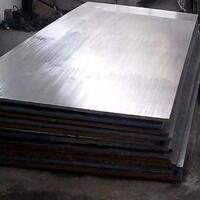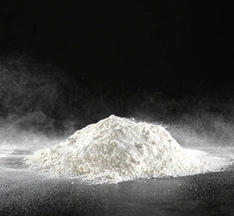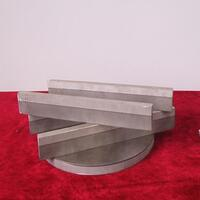1. Introduction
In the past 48 hours, architects and builders across North America have been buzzing about the surge in demand for sustainable, low-maintenance exteriors—especially metal-clad solutions like corten steel siding and zinc clad roofs. With climate resilience and longevity topping client wish lists, metal clad has moved from niche industrial use to mainstream residential and commercial design.

So, what exactly does ‘metal clad‘ mean? At its core, the term refers to any structure, component, or surface that’s covered or layered with metal for protection, aesthetics, or performance enhancement. Whether it’s a sleek metal clad house with vertical standing seam metal siding or an aluminum clad pipe insulation system in a refinery, the applications are vast—and growing.
2. What Is Metal Clad?
The metal clad meaning is straightforward: it describes materials or structures where a base substrate is bonded or coated with a layer of metal. This process—often called cladding—can involve techniques like roll bonding, explosion welding, or electroplating. The result? Enhanced durability, corrosion resistance, conductivity, or visual appeal.
Clad metals aren’t just about looks. In engineering, clad metal meaning often points to composite materials like aluminum clad stainless steel or stainless clad aluminum, which combine the strength of one metal with the corrosion resistance or cost-efficiency of another. Examples include titanium clad plates for aerospace or copper nickel clad for marine environments.
3. Architectural Uses of Metal Clad
One of the most visible applications today is in building exteriors. A metal clad building can feature everything from corrugated steel facade panels to elegant zinc metal siding. Designers love these materials because they age gracefully, require minimal upkeep, and offer dramatic visual impact.
Popular choices include:

- Corten steel facade: Known for its rust-like appearance that stabilizes over time, corten steel siding is both artistic and functional. Though corten siding cost can be higher upfront, its lifespan often justifies the investment.
- Zinc clad roof and zinc clad dormer: Zinc offers natural patina development and is 100% recyclable.
- Copper siding: Develops a distinctive green patina and is prized for heritage and high-end projects.
- Colorbond standing seam and PAC Clad standing seam roof systems: These provide clean lines and excellent weather resistance, often used with PAC Clad coping and column covers for a seamless look.
Even sheds aren’t left out—many homeowners now opt for a metal clad shed with exterior corrugated metal siding for backyard studios or storage.
4. Metal Clad in Construction & Infrastructure
Beyond aesthetics, metal clad plays a critical role in structural integrity. Steel clad buildings use thick steel plate or boiler plate steel for frames and bases. Components like steel base plates, diamond plate steel sheets, and checker plate metal sheet add slip resistance and durability in industrial settings.
Common plate materials include mild steel plate, carbon steel plate, and specialty alloys like 6061 T6 aluminum plate or 316 stainless steel plate. For high-wear zones, chrome carbide overlay plates or manganese steel plate offer extreme abrasion resistance.
Architects also specify perforated plate or metal plate with holes for ventilation, acoustics, or decorative screening—often cut using precision metal sheet cutting services.
5. Electrical and Industrial Applications

Not all metal clad is architectural. Metal clad electrical wire—also called MC cable—is widely used in commercial construction, including in Pennsylvania, where code allows surface-mounted metal clad wiring in many settings. Types include aluminum clad steel wire, cu clad wire, and aluminum clad wire for specific conductivity or shielding needs.
In piping and insulation, aluminum clad pipe insulation protects against moisture and mechanical damage. Meanwhile, in electronics, metal clad PCBs (printed circuit boards) sometimes require baking to prevent delamination—a niche but vital detail for engineers.
Industrial sectors rely on alloy clad materials like 2024 T3 clad aluminum or 7075 T6 clad for aerospace, while oil and gas may use inconel 625 weld overlay or cupro nickel clad for extreme environments.
6. Material Varieties and Finishes
The world of clad metals includes dozens of combinations. Aluminum clad steel (or aluminium clad steel) merges light weight with strength. Stainless clad aluminum offers corrosion resistance without the full cost of solid stainless.
Finishing processes like chromium electroplating, electroless nickel, or gold coating enhance performance or appearance. Even brass plates for engraving or bronze plate price per kg reflect the diversity of available clad and solid metal plates.
For buyers, terms like ‘steel plate for sale,’ ‘aluminum sheet for sale,’ or ‘aluminium checker plate near me’ are common search queries—highlighting the accessibility of these materials through distributors nationwide.
7. Conclusion
From the sleek lines of a steel clad house to the hidden strength of metal clad wire in your office walls, ‘metal clad’ is far more than a buzzword—it’s a versatile, durable, and increasingly sustainable solution across industries. Whether you’re choosing corten steel siding for its raw beauty or specifying a 3/16 steel plate for a heavy-duty base, understanding clad metals unlocks smarter, longer-lasting design and engineering decisions.
Our Website founded on October 17, 2012, is a high-tech enterprise committed to the research and development, production, processing, sales and technical services of ceramic relative materials such as Metal. Our products includes but not limited to Boron Carbide Ceramic Products, Boron Nitride Ceramic Products, Silicon Carbide Ceramic Products, Silicon Nitride Ceramic Products, Zirconium Dioxide Ceramic Products, etc. If you are interested, please feel free to contact us.
